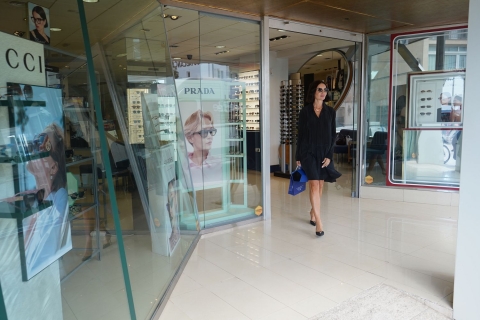Trend & Fashion
Creativity in luxury: chain or value system?
Fashion and luxury. So near and so far. The first group bases their creativity on knowing what the consumer wants, the second group bases their creativity on proposing something that consumers do not yet know they want.
Spanish fashion retailers have achieved a position of global reference, as can be seen in the well-known examples of Zara, Mango and Desigual. However, this situation has not translated to the realm of luxury retail, in which Spain is trailing far behind the leading French companies. This may seem strange for a country like Spain, which boasts all the necessary ingredients for success: artistic talent, excellent raw materials and a long tradition in the production of luxury goods.
The French example seems to be the exact opposite of Spain’s. Their dominant position in the luxury sector with companies like Chanel and Hermès, and conglomerates such as LVMH or Kering, coexists with a modest standing in the distribution of high-street fashion. In fact, France can hardly include any of its retail companies among the world’s top high-street fashion brands. Again, this is surprising, as one would expect the French to be a dominant force across all aspects of the fashion industry.
So why is this? What factors can help us understand the apparent distance between Spain and France in the worlds of luxury and fashion retail? This article reflects on aspects that help to understand this situation, and shows how, based on the authors’ study, the answer lies in the way in which creativity is understood and managed.
The fashion industry, regardless of luxury, is usually classified as one of the industries of mass consumption. Such industries are characterized by very high turnover volumes and operational complexity. For instance, access to all types of consumers requires large-scale commercial deployment: points of sale, communication policies, and so on. Furthermore, the industry has an extremely important dynamic component: fashion itself. That is, everything, or virtually everything, changes from year to year. While the products themselves do not change much – we still buy trousers and shirts – what does change is their shape, color, texture, etc. This further complicates the already demanding task of dealing with a large number of customers. Obviously all this is tied to significant, complex logistics. Conveying so many products to consumers in a timely manner is no simple task.
Accessing the mass market, let alone reaching a position of note within it, has therefore always been a challenge for many companies. To overcome this, a differential factor has been designed in the industry precisely to mitigate this high complexity. Basically, it involves the collection. In essence, companies must anticipate what they will be offering with enough time to design it, produce it and deliver it to the stores. Normally businesses will require six months to a year to execute the entire process. Hence the importance of the collection.
Spain appears to have been very successful in this regard, with Inditex heading the country’s well-deserved reputation. The case of Zara is also very enlightening when it comes to understanding the reasons for success in such a dynamic industry of this size. Breaking stereotypes in the sector, Inditex has become a model of how to use the collection to break the paradigm, with a design based on operational efficiency and speed in the client relationship. It essentially boils down to being near to the customer, to deliver what they need when they need it.
If the classical concepts of strategy, such as the value chain, are applied, we can come to understand the success of Zara. It is about assessing the industrial environment and determining where there is capacity for improvement. Once the value chain has been defined, improvements to increase efficiency are sought, helping the company get closer to the customer.
However, the luxury sector, for which France serves as a prime example, does not seem to respond to this paradigm. This article shows how the key to understanding the complicated management of luxury companies lies in understanding the role played by creativity. This refers to creativity in its broadest sense; if success were based solely on creativity as determined by individual talent, Spain, which has numerous examples of great designers, would presumably have a similar number of renowned luxury companies as its neighbor.
A new paradigm of thinking is proposed based on creation itself, compared with that based on identifying market needs. That is, one of the key aspects of luxury companies is to understand that the paradigm of thinking does not stem from identifying market needs. As suggested above, in other industries this is taken as a fundamental premise. In fact, the characteristic of a luxury company is its ability to make its own creative proposal, i.e. not identifying what the customer wants, but rather proposing to them what they don’t yet know they want, or could not imagine wanting. To make a creative proposal therefore does not require consideration of what the consumer wants, but rather the ability to surprise them. For this, creativity is essential.
This diverges greatly from the classical concepts of strategy, and allows for better definition and implementation of strategy for luxury companies. In particular, a model based on creativity as a value system is outlined. According to the Creative Value System model, creativity is generated in collaborative environments where various component parts make up a system that allows the creation of value. This is unlike other environments more oriented to competitive efficiency, in which models like the value chain best explain value creation.
David Millán Planelles. Adjunct Professor. IE Business School, http://www.ie.edu/; Frédéric Godart. Professor. INSEAD








